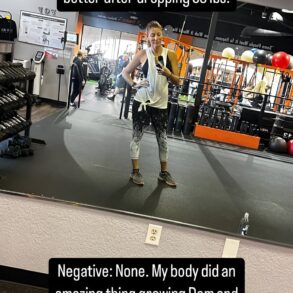It isn’t until I’m poised to crawl across the floor that I feel it. An anger potent enough to compete with the pain. I’m home alone and the painkillers are on the other side of the room. I am on all fours. I am trying not to pass out. I am feral. I am furious.
For days I have been in debilitating pain. At midnight the night before, I slipped out of bed, tiptoed to the bathroom, and vomited. I laid my scorching body on the cool tiles and closed my eyes and had circular conversations in which I told myself it wasn’t an emergency. Last time I was in this amount of pain, I ended up in emergency surgery, as a large cyst had burst on my ovary, causing a dangerous amount of internal bleeding. During the laparoscopy that followed, the doctors drained the blood spilling into my pelvic cavity. When I woke up, the surgeon told me I also had endometriosis, a condition that causes the tissue that normally lines the uterus to grow beyond it. For a decade, I had experienced different types of pelvic pain, but this was not the traditional path to this diagnosis—the average seven to 10 years people spend pleading with professionals to take symptoms seriously. Instead, I bypassed the medical neglect and internalized what the first few doctors told me as a teenager: Yes, menstrual pain can make you vomit or pass out, and no, there is nothing we can do but put you on birth control. I couldn’t fathom that how I felt was normal, but I didn’t have proof otherwise. A laparoscopy is the only way to definitively confirm that endometrial tissue is present. Sometimes you have to cut a woman open before you believe her.
For months I have been working my own job while covering a second full-time role, so I can’t take leave, but by the eighth day I realize the pain isn’t going to kill me, even if I feel as though I’m dying. I commission stories, I edit, I take a cold shower when I feel as though I’m passing out, I sympathize with columnists who feel tired and uninspired, I heat up my wheat pack in the minutes between meetings, I tell reporters to of course take the day off for their colds. Finally, I start work early and stay late so I can miss one hour of work to see a doctor. She refers me to a surgeon but explains the public waiting list in Australia means it could take more than a year before the procedure. I am willing to pay thousands of dollars through the private system once I can take time off, but I ask her how I could be seen sooner in the public system. She explains that there are other routes and rebates if I have been trying unsuccessfully to conceive. I remember that I will always be a womb before I am a person. The surgeon prescribes a series of medications, including stronger opioids, until we can revisit surgery.
More From Harper’s BAZAAR

I can’t convince my body to stand. My spine refuses to unfurl and instead stays clenched and curved, defending my soft and searing belly as I crawl toward the painkillers. The rage rises up my throat like bile, and I clench my teeth to stop it erupting into a scream. I know the pain will eventually leave, at least briefly. But the anger is less itinerant. It has been silently metastasizing in tandem with the cells trespassing onto other organs, and now, like them, it can’t be ignored. I press the pills through the foil and swallow.
Before Esther knew what endometriosis was, it almost killed her.
“Two cysts the size of mandarins burst inside me, releasing a liter of toxic fluid that shut my body down so perilously that my vital signs weren’t even registering,” she tells me. “Across a week in hospital, doctors supported my friends to help talk me back to life, because they couldn’t understand why I was so close to death. But that wasn’t the end.” For 20 years, living in Melbourne, Australia, Esther has endured the same cycle—debilitating pain, another operation, another convalescence—and still it continues. Even early-onset menopause has not brought relief. “After being told I wouldn’t be able to have children, I remember walking out of the hospital clinic, wanting to find the nearest exit, but instead, coming across the chapel: a classic nondenominational non-space designed to comfort nobody at all,” she says. “I was too depleted to be upset. I was too empty even to cry. There was just a solid core of anger. A hardness that I feared would never shift. As though I was made of nothing else.”
Eight laparoscopies later, and still Esther feels no one has adequately explained what causes or prevents the disease. She was one of the dozens of people who responded to my request for people with endometriosis to describe their rage. A chorus speak of the horrific pain, the organs that fused together in adhesions, the butchered operations, the fraught sex, the bowel complications, the side effects of treatment. They describe where the tissue has spread—two women saying it was on their lungs—and their multiple surgeries. They tell me of the grief of infertility, the blood, the literal scar tissue, the metaphorical scar tissue, the partners who advocated, the lovers who left, the doctors who dismissed, ignored, and blamed them, and then echoes of the same indignant question. As Esther put it: “How could something so common be so ignored? My life was being torn apart from the inside, and that didn’t matter to anyone.”
Bioengineer Dr. Linda Griffith, whose research has focused on endometriosis, has had multiple operations for the disease after years of doctors dismissing her bleeding (so excessive she was using three tampons at once) and pain (so severe she was sometimes taking more than 30 Advil a day). She told The New York Times that when her own teenage niece’s symptoms were dismissed as hers had been decades earlier, it “made lava shoot out of my head.” One doctor diagnosed Griffith, who donned a black leather jacket and a short haircut, as “rejecting her femininity.” I wondered too if he was suggesting that, by seeking medical help, she was shirking a responsibility to bear the sine qua non of womanhood: pain.
What is tolerable when you’ve been socialized to believe your pain is predestined by dint of having a uterus? It takes time to unlearn what is unacceptable and longer still to feel indignant about that. We’re uninterested in what we comprehend as inevitable. Endometriosis was named almost 100 years ago, and we still don’t know what causes it or how to cure it. It is incapacitating but not terminal, it is common but affects a set of organs long mythologized rather than dispassionately scrutinized, least of all by the huge population it impacts, whose members have historically been excluded from medical research—both as scientist and subject.
A woman, who is a sex worker, also in Australia, tells me she took eight years to get diagnosed because doctors dismissed her symptoms as a result of her profession, despite her persistent pleas that the pain and blood didn’t feel normal. It wasn’t until she was hospitalized a second time for pain that a student doctor took her seriously. “I have stage four endometriosis in my bladder, ovaries, and uterus, and I have to have a bowel resection surgery and a colostomy bag,” she says. “Now all the doctors do is badger me to freeze my eggs and tell me to lose 20 kilos before the surgery … I’m a size 14 to 16 (U.S. size 10 to 12).” These judgements are not only gendered but also racialized: A 2016 study found Black patients were about half as likely to be prescribed opioids in the emergency department than white patients, while a 2019 study found health care providers in the United States were less likely to identify pain in the expressions of Black faces. The validity of your pain lies in your proximity to the white, cisgender bodies medicine was modeled on and made for.
Tissue that usually lines the inside of my uterus will continue to embroider itself beyond it, across my ovaries, along my fallopian tubes or around my pelvic organs, potentially causing infertility. Endometriosis affects anatomy that has haunted and confused medical practitioners for centuries—the uterus an object of suspicion that it will cause trouble if not being used for its God-given purpose. Women with endometriosis are still routinely told, as I have been by well-meaning loved ones, that pregnancy is a cure when in fact the evidence shows that simply not having menstrual cycles—which is possible to achieve through medicine, without pregnancy—can ease some symptoms. You could strain your every organ and metabolic process, place yourself at risk of a host of other health complications, including death, to bring another human being into the world, all for the possibility of nine months of relief. At each appointment I am asked whether or when I will have children, and the question induces a kind of indignant amnesia. “I haven’t thought about it,” I respond automatically in the moment, remembering once the clinic door closes behind me that I wrote an entire book on the subject. I want to be treated as a human in pain, not a precious site of unfertilized potential.
Pia is currently pregnant for the second time, after she was told she was completely infertile but also that having a child would cure her of endometriosis. “News flash, I’m not infertile, and bigger news flash, I have endometriosis—but now I have a toddler, and soon I will have a newborn to take care of,” she tells me. Pia now runs rage ceremonies for people with chronic illnesses like endometriosis in which they can scream, laugh, write, dance, burn things, and punch pillows. “I’ve come to realize that anger is not a negative emotion—I don’t think any emotion is—[but] in this context, a reaction to injustice and/or boundaries being crossed,” she says. “I now view anger as inherently alchemical.” Attendees feel legitimized, Pia says, sowing new seeds on the scorched earth and encouraging “the parts of ourselves we’d thought we’d lost to the disease, to grow in new, more resilient ways.”
What else do we do with the fire beyond letting it burn? It is tempting to idealize our anger as a catalyst for change, an advocate in the emergency room, a consequence for policymakers. But chronic illness has little time for miracle cures, and I have found my rage has most utility in what it is not. It is not an apology. It is not resignation. It is not self-reproach—it involves an object, even if in the abstract. It says the discomfort, the neglect, the delays, the invisibility, and the costs are not okay. As a millennial woman, encouraged to treat the self as an enterprise, I am skilled at running my privately held, owned, and operated life without relying on others, but I can only go so far alone. My initial treatment spared me pain until it didn’t. The anger forces us to consider what the internalizing, minimizing, grinning, and bearing does not: help.
I return to the surgeon after three months. The medications have stopped the intense pain, but the side effects from the hormones are mentally exhausting. She explains there is one other pill she could put me on, but that I should know it will increase my risk of a brain tumor. I laugh, marveling at the inadequacy of my options. But I don’t want to be hysterical—was I not already spending the better part of my life knowing that cells were multiplying where they shouldn’t be, at a rate I couldn’t monitor?—and thank her for her care.
On the train home, I wonder whether, if this disease impacted one in nine people without a uterus, it would have no cure, an almost decadelong path to diagnosis, and a handful of barbaric treatment options. In their messages, endometriosis patients echo an answer this question over and over again, and I agree. We have no proof—it is just what we believe based on everything we have experienced.
The grace this disease demands of each person who contacts me is astounding. I remember we are sold a lie that women’s suffering is not only inevitable but also somehow redemptive—in our bodies, in our relationships, and in motherhood. But if history teaches us anything, it is that there is no prize for denying the pain, no trophy for the extra hours of unpaid labor, no bonus for declining pain relief, and no glory in smiling sweetly through the self-negation. No one I speak to wants the boring and lonely life of a martyr—they want adequate treatment options. We do not want to be dehumanized by being idealized. Just as I find tedious my default allocation as a womb, I am uninterested in identifying as a wound. Anger is a wish.
This post was originally published on this site be sure to check out more of their content.





